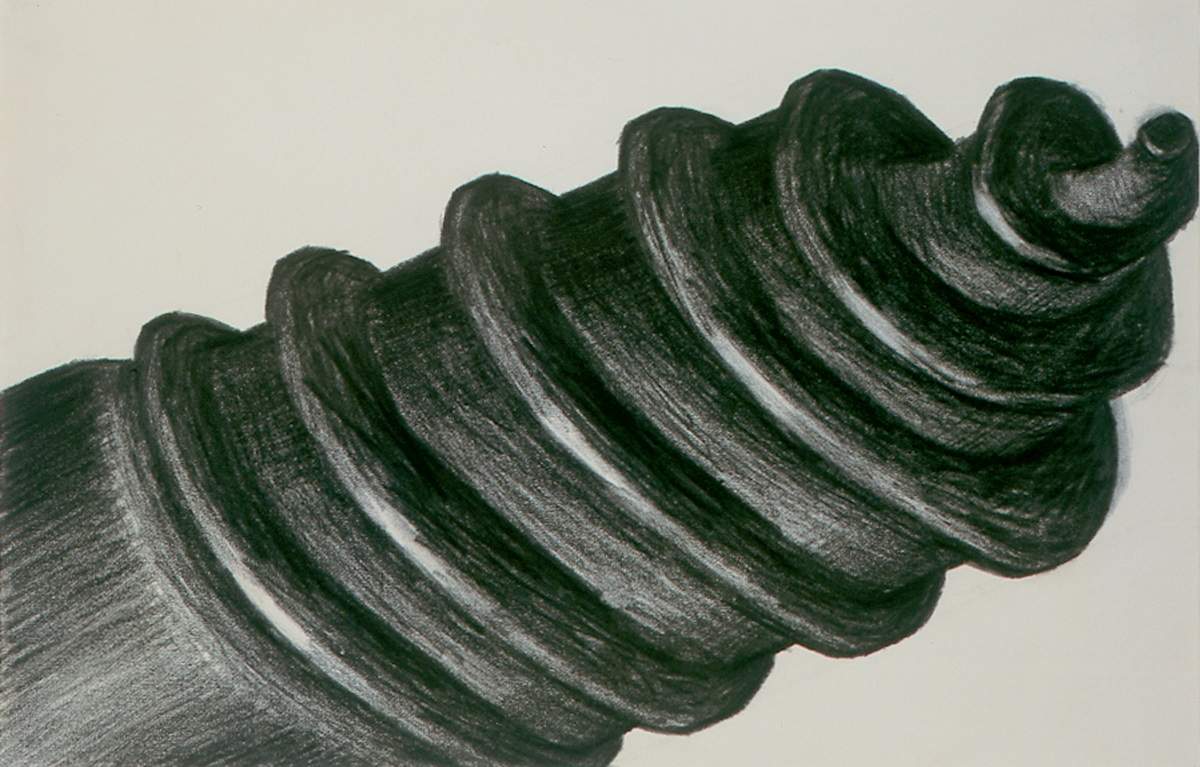Turin ’s Pinacoteca Agnelli has announced the next exhibition project it will hold at its Lingotto venue: it is an unprecedented exhibition dedicated to Lee Lozano (Newark, 1930 - Dallas, 1999), a pioneering artist and key figure in the New York scene of the 1960s and early 1970s. The exhibition, titled Strike, is conceived and produced by Pinacoteca Agnelli, and will open to the public from Wednesday, March 8 to Sunday, July 23, 2023 in the museum spaces in Turin. It will then be presented at the Bourse de Commerce - Pinault Collection in Paris from September 20, 2023 to February 12, 2024.
Strike, curated by Sarah Cosulich and Lucrezia Calabrò Visconti, is Lee Lozano’s first monographic exhibition in Italy. The exhibition is consistent with the institution’s renewed contemporary mission to bring to light previously unseen artistic perspectives in relation to the historical and symbolic legacy of the exhibition venue and its industrial past. The exhibition brings together a wide selection of the artist’s works, spanning her short but extremely prolific career from 1960 to 1972. Trained as a painter in Chicago, Lee Lozano moved to New York and quickly established herself in the art scene of the 1960s, distinguishing herself through a multifaceted body of work that includes painting on the one hand and a deeply conceptual practice on the other. While participating in the social and artistic context of the time, dominated by pop art, minimalism and conceptual art, Lozano maintains a position radically opposed to all forms of categorization and systems of power. Strike offers an exhibition itinerary that traverses the different periods of his work, starting with his expressionist figurative drawings and paintings, moving on to the Tools series (tools), large oils on canvas, and following their formal evolution toward minimalist abstraction. The exhibition project also brings together a selection of Language Pieces, works that mark the artist’s transition to an exclusively conceptual phase that ended in 1972 with Dropout Piece, corresponding to his final departure from the art scene.
Designed to be hosted in the spaces of the Pinacoteca in Turin and, later, in those of the Bourse de Commerce in Paris, the exhibitions, curated by Sarah Cosulich and Lucrezia Calabrò Visconti, are articulated through two distinct but related installations. The two exhibitions are intended to be an important opportunity to present the work of a revolutionary artist, appreciated by critics but little known to the general public, especially in Europe. Both projects will culminate in a unique publication published in English, Italian and French, produced jointly by the two institutions, which offers an in-depth critical survey of Lee Lozano’s work.
Lee Lozano was an American painter, visual and conceptual artist, pioneer and key figure in the New York art scene of the 1960s and early 1970s. Born Lenore Knaster on November 5, 1930, in Newark, New Jersey, she graduated from the University of Chicago in 1951, where she met and married architect Adrian Lozano. In 1960 she received her BFA from the Art Institute of Chicago and was divorced. In 1960 he moved to New York, where for the next ten years he was an active figure in the art scene, befriending figures such as Carl Andre, Richard Bellamy, Sol LeWitt, Lucy Lippard, and Dan Graham. During that period his figurative and abstract paintings were exhibited in group shows by numerous galleries, including the Green Gallery, Bianchini Gallery, in Cincinnati, Galerie Ricke in Cologne, and Paula Cooper Gallery, where Lozano presented his textual works for the first time. In 1970 the Whitney Museum of American Art in New York gave her a solo show, followed by exhibitions in Germany, Nova Scotia and at the Lisson Gallery in London. In 1971 she decided to drop the name Lee Lozano, renaming herself "Lee Free," which she later shortened to "E." With Dropout Piece, his 1972 work, he decides to leave the art scene. E’s traces reappear in 1982, in his parents’ city of Dallas, Texas, where he lived until his death. During those years, although he makes no new work, E considers his very existence to be a continuation of the making of Dropout Piece. E died on October 2, 1999 and is buried in an unmarked grave in Grand Prairie Cemetery, Texas. Solo exhibitions dedicated to Lee Lozano include: GL Strand, Copenhagen (2022); Hauser & Wirth, New York (2022); Karma, New York (2021); Hauser & Wirth, Somerset, (2020); The Fruitmarket Gallery, Edinburgh (2018); Museo Nacional Centro de Arte Reina Sofia, Madrid (2017); Karma, New York (2016); Hauser & Wirth, New York (2015/2011), Moderna Museet, Stockholm (2010).
His work is held in numerous collections, including the Museum of Modern Art, New York; Moderna Museet, Stockholm; Museum of Contemporary Art, Los Angeles; Wadsworth Ateneo, Hartford; Fogg Museum at Harvard University, Cambridge; Corcoran, Washington DC; and Museum für Moderne Kunst, Frankfurt, among others.
Image: Lee Lozano, No title (1964; graphite on paper; Pinault Collection) © The Estate of Lee Lozano. Courtesy of Hauser & Wirth
 |
| Pinacoteca Agnelli announces an exhibition on Lee Lozano, revolutionary artist of the 1960s-70s |
Warning: the translation into English of the original Italian article was created using automatic tools. We undertake to review all articles, but we do not guarantee the total absence of inaccuracies in the translation due to the program. You can find the original by clicking on the ITA button. If you find any mistake,please contact us.